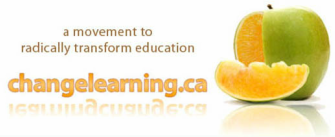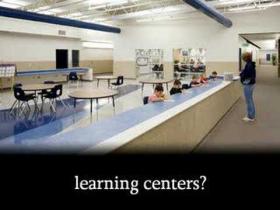|
If we don’t understand the issues, we can’t take effective action.
Many of us have a feeling that that something is wrong in education and that reform based on higher standards, improving student achievement tests and a back to basics approach will not fix it. But what exactly is the problem – and what kind of change is really needed to encourage innovative thinking, increase the motivation to learn or to help all children reach their full potential as engaged, happy and productive adults? The good news is that the information we need to do a better job of educating our kids is already out there. Research from a wide variety of fields is giving us a much clearer picture of how human beings learn, develop and thrive and about learning opportunities that work and those that don’t. Dive in. Take a Bite. Find out why our schools are set up the way they are. See what the research says about why your teenager has disengaged from school or how to nurture creative thinking. Explore what boosts kids motivation to learn and what kind of learning experiences promote deep understanding. Start small or look at the big picture. Go to the resource library. Make connections. The more we share information and discuss the issues, the more informed our actions can be – as educators, parents, students, politicians and voters. If we know more about how humans learn and see the possibilities and potential of programs in action, we can lobby for the kind of changes that actually help our kids and strengthen our society. What’s Really Gone Wrong in Education? Problems visible in schools and in our communities are not a result of poor teaching, apathetic youth or lack of rigorous standards. The educational system of today was built for the needs of our society over 150 years ago, using the knowledge available at the time it was created. Read more. How Humans Actually Learn and Develop. Children are born to learn. Taking advantage of critical periods of brain development and structuring learning opportunities to “go with the grain of the brain” can maximize the potential success of all of our children. Understanding that learning does not occur in isolation, means addressing the whole child. Read more. Educating for Today and Tomorrow. From effective integration of technology as a learning tool, to helping students develop the cross-disciplinary, creative and problem-solving skills needed in the 21st Century, education needs to keep pace with our changing world and the increasingly complex demands of the social and environmental challenges we face. Read more. Communities, Parents and Schools — The Three-legged Stool. Schools are overloaded because they can’t do it alone. If we truly want to provide the best learning opportunities for our kids, education needs to be more like a three- legged stool – with the structural support of home, school and community all working together. Read more. Re-envisioning Education. How can we take what we know and put it to work? Not just in our current classrooms and schools, but to build new models, structures and systems that are designed from the start to maximize the learning opportunities and life-long potential of each child. Read more. |
If the first few years of life include support for growth in cognition, language, motor skills, adaptive skills and social-emotional functioning, the child is more likely to succeed in school and later contribute to society. Featured VideoPrograms at Work |



